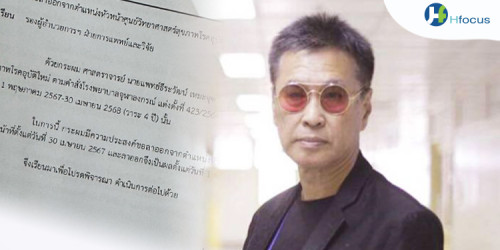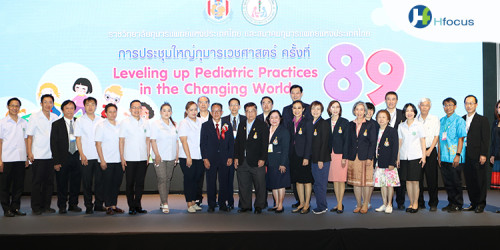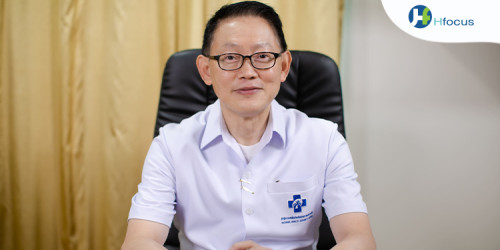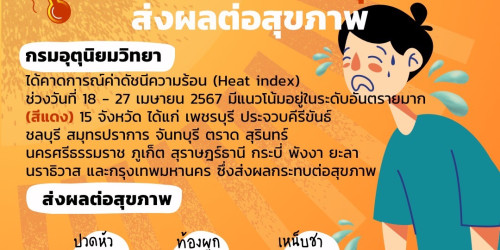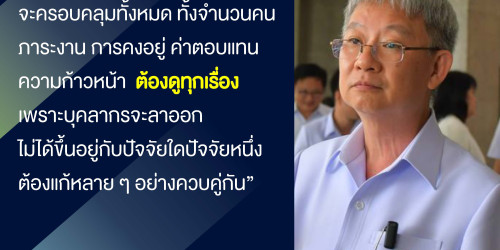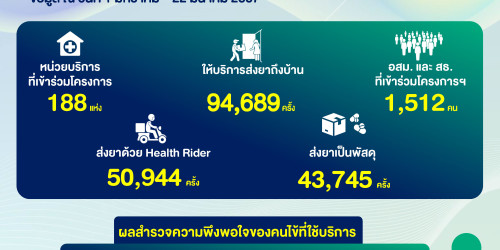Burgeoning medical costs, an expanding middle class and longer retirement periods are pushing more people toward private health insurance, particularly as state-sponsored schemes fail to keep pace with rising expectations.
If there's a single risk most likely to derail retirement plans, it's unforeseen healthcare costs. Many people, particularly those nearing retirement age, feel anxious about whether they have saved enough to fund their retirement an anxiety made worse by the difficulty of estimating exactly how much money will be needed.
Most people are aware that the cost of medic al care is rising outstripping inflation in many countries, including Thailand but they still can't predict how much these costs will increase in the future. Because of this uncertainty, planning for future illnesses and treatment is a critical component of any retirement strategy.
According to John Lee Kohshun, managing director and principal consultant of Singapore-based consultancy firm MuziHealth, there are two main reasons why saving for retirement is a major problem for many people.
"People's life spans are increasing, and we all want to live longer. But living longer means more years not working, and more years to spend your savings," he says.
"Furthermore, it means more years to contract any number of diseases."
Mr Kohshun points to Singapore, where many residents have very high retirement savings due to the state-administered Central Provident Fund (CPF), as a prime example.
For many years, workers in Singapore have contributed 20% of their salaries to the CPF, with their employers obliged to match this contribution.
The fund is managed by the CPF Board, which in vests the money and helps generate interest for fund members. Part of the fund is also set aside for a healthcare savings account called MediSave.
Yet there are many in Singapore who remain concerned the CPF may not be adequate to cover their retirement costs, particularly when it comes to health care.
"I am almost 69 years old now," Mr Kohshun says. "I have to make adjustments to ensure that I can live longer, have enough money to spend and also be healthy enough so that I do not have to spend too much money on health care.
"Star t saving now. Do not get old too fast."
AX A Insurance (Thailand) CEO Kheedhej Anansiriprapha says individual healthcare planning remains a relatively low priority for most Thais. But awareness is starting to grow, he says, mainly among the well-heeled and white-collar workers.
"Retirement doesn't mean your risk will disappear or your financial burden is wiped out," Mr Kheedhej says.
"You still have continued expenses after retirement apart from general daily spending, be it motor insurance if you're still using cars, personal accident coverage, home and contents insurance, and more importantly health insurance."
Advances in healthcare technology and an increase in living standards have ensured that retirement is now a much longer period than it once was. Retirement can now be a significant stage of one's life which needs to be financed carefully.
Savings alone may therefore not be sufficient, and fixed income annuities or similar investment solutions should be considered to provide a sufficient income throughout retirement.
Inflation is another risk. It is inevitable that prices will rise over time, and financial planning for retirement must therefore seek a return that will outpace inflation to guarantee security.
However, Mr Kheedhej admits many Thais are unable to afford even basic health care expenses, and the government is unlikely to become financially capable of offering high-quality medical treatment to all.
"Health care in Thailand is becoming polarised. State- sponsored universal health coverage (UHC) and other state healthcare plans partially cover low income earners, while the middle and upper classes who seek better quality treatment and convenience opt to take private health insurance or self-pay medical treatments and services," he said.
Since the 1970s, Thailand has gradually succeeded in creating several statesponsored health insurance schemes: the Civil Servant Medical Benefit Scheme (CSMBS) for civil servants and their families; Social Security Scheme (SSS) for private employees; and the Universal Coverage (UC) Scheme, formerly referred to as the "30-baht scheme", which is theoretically available to all other Thai citizens.
Despite lingering questions about the quality of services and medical treatment provided under the schemes, Thailand 's universal health coverage was recently mentioned by the UN Development Programme (UNDP)'s Human Development Report as a bright spot in the country's social policies.
Nonetheless, Mr Kheedhej said quality of treatment and medicines offered under the UHC schemes remains in question, and is still widely rated as "unsatisfactory" by the more affluent members of society.
More importantly, he said medical costs are rising annually, and are outpacing inflation. The costs of medical care are rising by 5-10% every year, he said, making private health insurance increasingly attractive to those who can afford it.
" There's no way to accurately predict what prices will be [in the future]. Although we know healthcare costs are rising, we don't know how much they will increase during our later years," Mr Kheedhej says.
"Buying health insurance is a smart choice to make certain you can cope with costly medical bills."
Mr Kheedhej suggests that it is best to purchase an insurance policy as soon as one enters the workforce. That way, insurers can accumulate a profile of the client and can offer certain deductions on post-retirement policies.
There are currently two broad types of health insurance available in Thailand. The first, categorised as non-life, is a single policy focusing only on health coverage for sickness and accident.
The second involves a health rider attached to a life insurance policy and is seen by some as having an advantage given its life coverage.
Within those broad categories, there are a variety of health insurance products tailored to meet different individual demands. Premiums naturally vary based on the kind of treatment and inpatient accommodation desired.
For example, Bupa Insurance (Thailand) Co, a leading health insurer, offers a range of policies that will pay out between 200,000 and 600,000 baht in annual medical expenses, and between 2,000 and 4,000 baht a day for an inpatient room.
Many life insurers, such as Muang Thai, also provide health riders that suit those already covered by group plans provided by employers but who want additional coverage.
The popularity of health insurance products is growing rapidly in the region, especially in the wake of 2009's H1N1 swine flu scare.
Though premium payments for health insurance products are not tax-deductible, their sales are growing amid mounting concerns over high medical costs.
Still, written premiums in Thailand are still relatively low, making up around 3-4% of the kingdom's general insurance market, or about 4-5 billion baht a year.
The figures exclude premiums generated by health riders attached to life insurance policies.
In developed markets, health policies generally account for 20-30% of the total insurance market.
"The Thai insurance market remains in its infancy, but the prospects are promising, particularly given the increasingly affluent and ageing population," Mr Kheedhej says. "Above all, Thai people are prone to heart disease, diabetes and high blood pressure because of their diet."
Mr Kheedhej said Thailand is fast becoming an ageing society, with the proportion of people aged over 60 tipped to rise as high as 25-30% of the total population, from its current rate of 10-15%.
"This's why health cover providers, particularly for highly-capitalised private hospitals , have been beefing up their mergers and acquisitions in recent years," he said.
Source: Bangkok Post June 24, 2014
- 7 views

